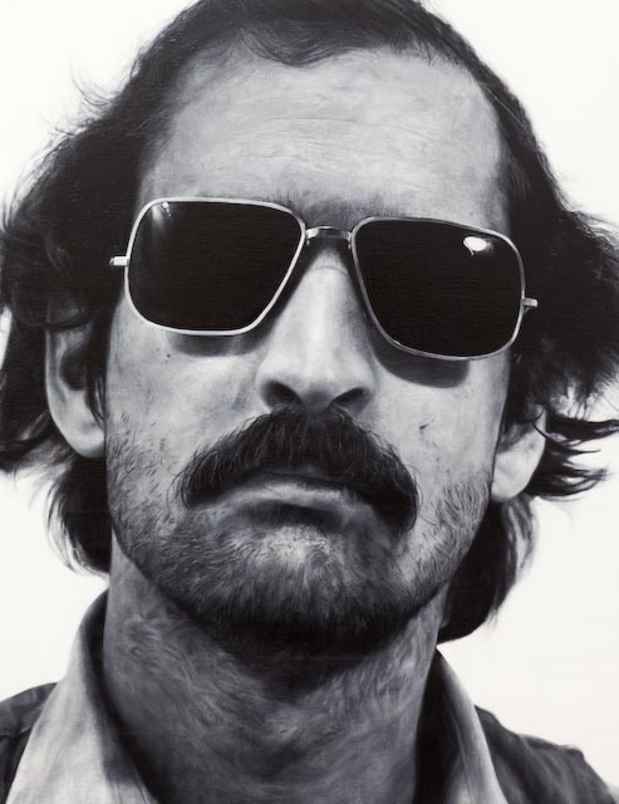"Retuning Reality" Exhibition
Lyons Wier Gallery

This event has ended.
By transposing images from his past onto canvas, Toronto based painter Alex Bierk deconstructs source material into abstraction as visceral reclamations of lived experience. He focuses on the connection between youth and the formation of identity and the disappearance and distortion of memory. Of paramount significance is Bierk's sentient and continually evolving relationship with the past as it is referenced throughout his work. Bierk re-appropriates source material to explore the language and rhetoric of imagery as well as the layers of meaning, whether created, intended or accidental, in the source photographs. Working within the physical rigidity and premeditated nature of the grid process, the works become sites of evolving conflict and uncertainty. Ranging from images of his adolescence to landscape and portraiture, the works intertwine Bierk's contemplations of dream, memory, nostalgia, longing and hallucination, while maintaining a sensibility and precision that spills into hyper-realism.
A native of Detroit, Michigan, Stephanie Buer has an intimate appreciation of urban desolation and a love for the once prosperous buildings that have been abandoned to time and the elements. Her works in both oil and charcoal capture with photo-like detail the layers of gritty history that accumulate as these places succumb to the manipulation of vandals, artists, and the steady persistence of nature. In the juxtaposition between decay and growth, Buer finds a place that echoes the peace she finds in nature, with its endless cycles of change. Part of the power in Buer's work comes from the absence of human figures in a place clearly marked by them. Rather than allowing distant observation as narrative, she draws viewers in to witness the space that people have left behind, compelling them to personally experience these modern relics that have been condemned by society. The simultaneously idyllic, yet derelict scenes challenge viewers to question their notions of beauty, while the detailed texture and depth that is characteristic of her work invites them to explore these places personally, as she does while taking the photographs from which she works.
For the last three years, Richard Haden has combined his running practice with his studio practice. While on long runs throughout Miami, Haden looks for objects to carve, images to photograph, people to document and sounds to record. The objects that he finds are objects that are not necessarily discarded but have become part of the urban landscape, the topography--still part of an ongoing narrative. Haden finds them and transports them back to his studio where he uses the objects as a model. The result is a carving that re-presents the repurposed image of the object weighted with the intent to emphasize an uncanny conversation by exploiting the metaphorical potential of the object, as sign, loaded with broad possibilities.
Jason A. Maas creates drawings that find the core expression in human body language by carefully removing contextual information and leaving a structure that both illuminates and challenges the content of an image. Negative spaces provide focus, silence, and an openness to allow the viewer to finish the drawing. He confronts the current understanding of how we view journalistic images of social unrest that proliferate the media, from professional photographs to low-resolution cell phone photos. His new body of work removes the identity and the flesh of figures to explore the role of clothing and costume in our society. How it functions to establish our sense of order, respect, ceremony & designates positions of authority.
Kevin Peterson's work is about the varied journeys one takes through life. It is about growing up and living in a world that is broken. These paintings are about trauma, fear and loneliness and the strength that it takes to survive and thrive. Each painting contains the contrast of the untainted, young and innocent against a backdrop of a worn, ragged, and defiled world. Support versus restraint, bondage versus freedom, and tension versus slack are all themes that Peterson often visits. His work deals with isolation, loneliness and longing teamed with a level of optimistic hope. Issues of race and the division of wealth have arisen in Peterson's recent work. This work deals with the idea of rigid boundaries, the hopeful breakdown of such restrictions, as well as questions about the forces that orchestrate our behavior.
Jeff Ramirez scours and consumes countless pictures observed on the Internet. Many of which encourage him not to ask questions, but rather to just accept their truths. While they may appear to be candid, they are capturing both pose and performance. Ramirez feels compelled to create images using others as props, stand-ins and doubles for him. While typical portrait subjects want to demonstrate their power and import, the subjects in his paintings are isolated and aware that they are being watched. They are barely there, reduced by the act of creation. His small paintings are styled after paparazzi images and photographs commonly found on social networking sites. The voluminous production of such images allows for banality and loss of context. Rendered in a photorealistic style, these paintings receive a physical presence that gives weight to the images. They act as anti-portraits that reduce an experience to a singular expression of denial. The pose of the subject is a response to being identified and singled out by the creator for the benefit of the viewer.
Media
Schedule
from February 15, 2013 to March 23, 2013
Opening Reception on 2013-02-15 from 18:00 to 20:00
Artist(s)
Alex Bierk, Stephanie Buer, Kevin Peterson, Jeff Ramirez, Richard Haden, Jason A. Maas